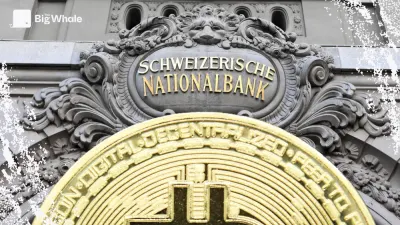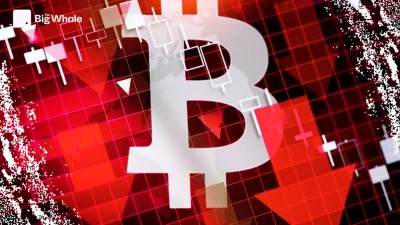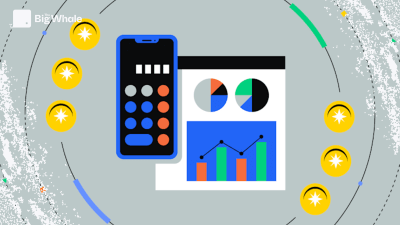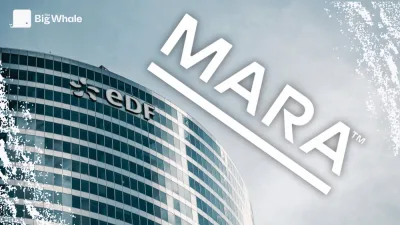TBW - XRP analysis: Can banks' blockchain still convince?

What you need to know 🐳
XRPL is more like a consortium secured by selected players than a truly permissionless network.
Despite certain limitations, the project has maintained its position among the most capitalised cryptocurrencies for several years, driven by a dynamic community with a strong presence on social networks.
General presentation 🧬
XRP Ledger (XRPL) was launched in 2012, making it one of the first blockchain networks. XRP is XRPL's native token and is used to pay transaction fees.
XRPL's main objective is to facilitate international payments quickly and at low cost. The network does not yet support smart contracts, but the project team has announced their future integration.
XRPL's consensus algorithm is based on "Proof of Association" (PoA), using Unique Node Lists ("UNL"). To participate in the network consensus, you need to be added to the lists used by the current validators, so XRPL is not "permissionless".
All transaction fees are "burned", and network validators receive no rewards. There is therefore no financial incentive to participate.
Despite the absence of smart contracts, XRPL has functionality to create other tokens, including stablecoins, tokenised assets or NFTs. Each address can define the tokens it wishes to receive.
Financing 💰
Ripple, the company behind its development, has raised a total of $283 million in funding rounds between 2013 and 2019.
Team and community 👾
Brad Garlinghouse is the CEO of Ripple. He first joined the company in 2015 as COO before rising to CEO in 2016. Prior to that, he held senior positions at AOL and Yahoo.
David Schwartz, CTO of Ripple, is one of the original architects of the XRPL. Prior to joining Ripple, he was CTO at WebMaster Incorporated, where he developed secure cloud storage solutions and messaging systems for organisations such as CNN and the NSA.
The project has 2.9 million followers on X and has a particularly active community on social networks.
Ecosystem 🤝
The absence of smart contracts on XRPL currently limits the possibilities for innovation on the network.
XRPL incorporates a native decentralised exchange (DEX) based on an order book. All the marketplaces on the network use the same order book for their trades, which centralises liquidity but restricts innovation. Since mid-2024, DEX has been enhanced with an automated market maker (AMM) to complement the order book.
Sologenic, one of XRPL's main marketplaces, offers various services including tokenisation.
XPMarket is another major marketplace, specialising in the exchange of memecoins.
OpenEden offers US Treasuries tokenised on XRPL, but this service has only attracted $5 million in investment.
The Axelar protocol ensures interoperability between XRPL and other blockchains, enabling token transfers.
Ripple recently deployed its stablecoin RLUSD on XRPL and Ethereum.
A native decentralised lending platform is in development, aiming to offer sub-collateralised lending.
Peersyst, an Ethereum Virtual Machine (EVM)-compatible XRPL sidechain based on the Cosmos SDK, is under development.
>> Read our article on the XRPL ecosystem
The XRP token 🌕
There are currently 57 billion XRP in circulation.
At its launch, XRPL had a total quantity of 100 billion XRP. This number is gradually decreasing as no new tokens are issued and transaction fees are destroyed ("burned"). Around 12 million XRP have been destroyed since launch.
In the absence of staking, XRP is used solely to pay the network's transaction fees.
The initial distribution of XRP was structured as follows:
- 20% for the founding team
- 80% to ensure the development of the project
In 2017, the project implemented a locking system for the 55 billion tokens intended for the development of XRPL. The mechanism releases 1 billion tokens each month to fund development. Unused tokens are automatically relocked at the end of the month.
Competitors ⚔️
XRPL aims to facilitate cross-border payments and develop the tokenisation of assets, placing it in direct competition with the majority of existing blockchains.
Ethereum largely dominates the market for stablecoins and tokenised assets.
Blockchains such as Base, Arbitrum or Solana host stablecoin volumes significantly higher than XRPL, while offering faster transactions.
The total value of stablecoins and tokenised assets on XRPL remains very small compared to other major blockchains.
Regulation ⚖️
In 2020, the SEC launched a lawsuit against Ripple accusing XRP of being an unregulated financial security. The election of Donald Trump and the departure of Gary Gensler could lead to an advantageous resolution for Ripple.
>> Read our article on Ripple's run-ins with the SEC
Risks and limitations 😨
To become a validator, you need to obtain authorisation from the network's existing validators. These validators have no financial incentive to participate, their only motivation being to contribute to the decentralisation of XRPL. This structure considerably limits the decentralisation of the network.
XRPL suffers from significant technical limitations:
- despite its centralised nature, the network displays lower performance than more recent blockchains
- the absence of smart contracts significantly hinders innovation on the platform
Roadmap 📝
XRPL is currently working on the implementation of smart contracts, as mentioned above. In parallel, the development of the Peersyst sidechain, compatible with EVM, should stimulate innovation in the XRP ecosystem.
The Big Whale's opinion 🐳
XRPL is one of the first blockchains to have seen the light of day. Unlike "permissionless" networks where anyone can participate in the consensus process, XRPL operates as a consortium with players selected to ensure the network's security.
The project team owns 43% of XRP, and as one of the most capitalised cryptocurrencies, XRPL has a considerable treasure trove. This hoard is funding its technical development and commercial growth, particularly with traditional players.
However, the project is struggling to establish itself as a benchmark infrastructure for cross-border payments and asset tokenisation, particularly in the face of major competing blockchains.



